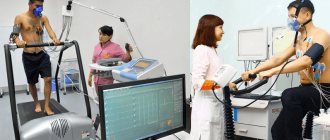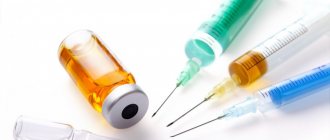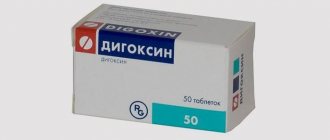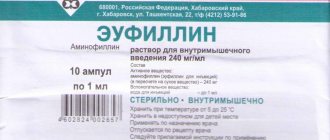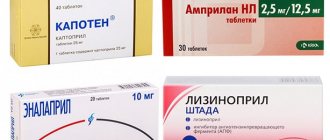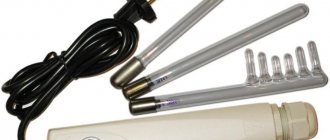Adrenergic blockers are a group of medications that can block nerve impulses that respond to adrenaline and norepinephrine. That is, the medicinal effect of these drugs is opposite to the functions of adrenaline, as well as norepinephrine. These medications can be said to interrupt the action of adrenergic receptors, which are located in the heart and vascular walls.
Such medications are widely used in cardio practice, in the practice of therapists: mainly for the treatment of cardiovascular diseases. Doctors often prescribe these medications to people who have arterial hypertension, heart rhythm disturbances and other related pathologies. One such medication is Labetalol.
Description
The active substance and name are identical - labetalol is the active component of this medicinal product. This ingredient is able to lower blood pressure by blocking adrenergic receptors, and also due to its additional vasodilating effect.
The composition has two main effects - hypotensive and anti-ischemic. They do not affect the volume of cardiac output and do not provoke reflex tachycardia, which is a consequence of a decrease in blood pressure.
The medication is produced in a tablet form familiar to the patient. It is recommended to take pills 3/24 (three times a day) 0.1 g. In case of severe disease, increasing the dosage is possible. The maximum daily dose cannot be higher than 1000 mg, which is divided into 4 oral doses. An alternative to tablets is an injection solution, also sold under the name Labetalol. This solution can be used mainly in inpatient treatment. The fact is that when it is administered, the pressure can drop sharply; it is prohibited to give injections without medical supervision.
Pills can be purchased in two dosages - 100 mg and 200 mg. The number of pieces in a pack is 30 or 100. The solution is purchased packaged in 10 ampoules of 50 mg of the active ingredient in 5 ml each.
Pharmacological characteristics
Labetalol is classified as a non-selective adrenergic blocker. The drug simultaneously acts on alpha and beta adrenergic receptors, so the hypotensive effect occurs very quickly.
4 main pharmacological objectives of Labetalol:
- Dilate blood vessels;
- Quickly reduce blood pressure at high levels;
- Reduce peripheral vascular resistance;
- Reduce the severity of left ventricular hypertrophy.
The medicine is quickly absorbed orally during meals. The half-life of the substance from the plasma part of the blood is four hours. It leaves the body mainly as part of urine in a state of inactive metabolites.
In a hospital setting, the medicine can be used as a remedy for a documented hypertensive crisis. In this case, it is injected into a vein slowly at a dosage of 20 mg. If doctors see the need to increase the dosage, they can repeat the injections after 10 minutes. It is considered safer to administer Labetalol in infusion form. To do this, the specialist dilutes the one percent injection solution from the ampoule with an isotonic solution of sodium chlorine or glucose. 2 mg per minute is administered. The optimal dose is from 50 to 200 mg.
Intravenous administration is only permissible when the patient is lying down - the pressure can drop quickly, so this position of the patient is understandable.
Mechanism of action of the drug
The therapeutic effect of labetalol is associated with its ability to block adrenergic receptors. These are nerve endings that are stimulated by norepinephrine. There are 2 main classes of adrenergic receptors - alpha and beta.
Labetalol blocks alpha1-adrenergic receptors, which are located primarily in the walls of small arteries (arterioles). As a result, they expand in all tissues of the body.
Beta adrenergic receptors are divided into 3 subclasses:
| Subclasses | Short description |
| Beta1 | located in the heart muscle and smooth muscles of the arteries; |
| Beta2 | localized in the walls of the bronchi, as well as in the liver tissue; |
| Beta3 | are located in adipose tissue. |
Labetalol combines a selective blocking effect on alpha1-adrenergic receptors and a non-selective (non-selective) one on beta-adrenergic receptors. The ratio of this activity is 1:3 when taking tablets and 1:7 when administering an injection solution.
Blockade of beta-adrenergic receptors causes a slight slowdown in heart rate and relaxation of blood vessels. This “double effect” leads to a rapid decrease in blood pressure in people with hypertension.
Despite the non-selective action, the medicine does not lead to pronounced spasm of the bronchi, in the wall of which beta2-adrenergic receptors are located.
The peculiarity of labetalol is its ability to quickly reduce blood pressure levels.
We recommend reading about calcium channel blockers. You will learn about the mechanism of action of drugs, the use of antianginal or selective blockers, as well as the types of slow calcium channel blockers. And here is more information about the drug Verapamil.
Who is Labetalol indicated for?
Only a physician can make such prescriptions. Self-medication is unacceptable.
Indications for taking Labetalol are:
- Monotherapy or complex treatment of hypertension;
- Relief of hypertensive crises.
Even if the medication was prescribed to you by a doctor, read the instructions for using Labetalol before your first dose. If at least one of the contraindications has raised a question in your mind, you suspect that it may relate to your health condition, you should not take the medicine until this topic has been discussed with your doctor.
Indications for use
Labetalol is prescribed to treat high blood pressure. This is the main indication for taking this medication. The drug is also used in the treatment of pathologies such as aortic aneurysm and pheochromocytoma.
The pharmacological action of the drug allows the drug to be used to eliminate a hypertensive crisis.
If your blood pressure is high, Laberatol may be prescribed.
Who should not take Labetalol?
The list of contraindications is a serious list that should not be ignored by anyone. Make sure you are not one of those patients who should look for another treatment.
Labetalol is contraindicated in:
- Diagnosed myocardial infarction;
- Severe heart failure;
- Sinoatrial or atrioventricular block;
- Asthma;
- Chronic nephrological disease;
- Prinzmetal's vasaspastic angina;
- Cardiogenic shock;
- Bradycardia and bradyarrhythmias;
- Hypersensitivity to the substance.
Analogues of Labetalol are Lacardia, Trandat, as well as Labetol, Ibolap, Amipress, etc. Foreign medications are often considered more effective. And this is not an unfounded statement. In addition, imported products have an optimal degree of purification: and this is important, because you don’t want the negative effect of the tablets to be significant.
Labetalol
Labetalol is a synthetic antihypertensive drug belonging to the group of non-selective beta blockers for oral and parenteral use.
Pharmacological properties
Labetalol is a synthetic drug that belongs to the group of non-selective beta blockers. Labetalol also has the properties of an alpha-blocker with an effect on postsynaptic α 1 -adrenergic receptors.
Its chemical structure is a racemate, which consists of four stereoisomers. The ratio of beta and alpha adrenergic blocking activity in labetalol ranges from 3:1 when administered orally to 7:1 when administered intravenously.
As a result of interaction with α- and β-adrenergic receptors, labetalol has a vasodilatory effect and reduces total peripheral vascular resistance, which leads to a decrease in systemic blood pressure without a significant decrease in cardiac output and the development of reflex tachycardia.
Labetalol has little effect on lipid metabolism. Labetalol causes a decrease in renin synthesis. Compared with other beta blockers, labetalol does not impair glomerular filtration rate or renal blood flow.
Pharmacological
When taken orally, labetalol is rapidly and well absorbed from the gastrointestinal tract, but bioavailability is only 25% due to the first-pass effect through the liver. When administered intravenously, it is quickly distributed in the body; bioavailability when administered intravenously is 100%.
After administration, the maximum concentration is reached within 2 minutes, but after 8.5 minutes it decreases. When taken orally, the hypotensive effect begins within 20-120 minutes with maximum effect after 1-4 hours. Labetalol penetrates the blood-brain barrier in small amounts.
The drug penetrates the placental barrier and is excreted into breast milk. Labetalol is metabolized in the liver. The drug is excreted from the body mainly by the kidneys, partly with bile and feces. The half-life is 2.5-8 hours, this time may increase if renal function is impaired.
In case of renal failure, labetalol may accumulate in the body.
Indications for use
Labetalol is used for hypertensive crisis, pheochromocytoma, dissecting aortic aneurysm, hypertension, arterial hypotension during clonidine withdrawal.
Side effect
When using labetalol, the following side effects are possible: rash, skin itching, skin hyperpigmentation, dry eye mucosa, orthostatic arterial hypotension, dizziness, headache, loss of consciousness, sinus bradycardia, blockade, increased symptoms of heart failure, depression, paresthesia, sexual dysfunction. (impotence, impaired ejaculation, decreased libido, priapism), urinary retention, hypoglycemia, nightmares, alopecia, Lyell's syndrome, increased bronchial muscle tone, nausea, vomiting, liver dysfunction, diarrhea, feeling of fatigue, allergic reactions.
Contraindications
Labetalol is contraindicated in case of hypersensitivity to the drug, cardiogenic shock; GOST standards for myocardial infarction; uncontrolled initial heart failure or heart failure refractory to cardiac glycosides; Prinzmetal's angina; sinoatrial block; AV block II-III degree; for broncho-obstructive diseases or bronchial asthma; untreated pheochromocytoma; bradycardia, arterial hypotension; metabolic acidosis; severe peripheral circulatory disorders. Labetalol is not used in childhood and adolescence. Labetalol is contraindicated during pregnancy and breastfeeding
Prescribed with caution for severe liver and kidney dysfunction, myasthenia gravis, diabetes mellitus, thyrotoxicosis, psoriasis
Release forms
Labetalol is available in the form of tablets of 0.1 and 0.2 g; 1% solution in ampoules of 5 ml; 5% solution in 4 ml ampoules and 5% solution in 20 ml bottles.
Mode of application
When you come to an appointment expecting to receive a piece of paper with your treasured prescriptions, you should listen to everything the doctor says. He will not just write the name of the medicine and the method of administration on the prescription sheet: he will explain what your treatment regimen will consist of. It can only be individual - do not use other people's recipes, it is dangerous!
Only strict adherence to this scheme and the correct selection of dosage will become the most adequate therapy that will keep the disease under control. The doctor specifies the scheme, focusing on standard instructions.
To quickly relieve negative symptoms:
- For mild/moderate hypertension, the patient is prescribed up to 400 mg of the drug per day;
- For moderate/severe hypertension – no more than 1000 mg daily;
- For maintenance therapy, the following dosage is used: 200 mg/24.
The daily dose is usually divided into two or three doses. It is recommended to take the pill after meals, as usual, with water. The instruction sheet says that in the first week of therapy you need to take one pill of 100 mg 2/24, the dosage is gradually increased according to the regimen prescribed by the doctor. If the dosage is gradually increased, this will help prevent sharp drops in the values on the tonometer.
As already noted, during a hypertensive crisis, a slow intravenous solution is administered: this can only be done by a doctor in a hospital or an emergency room doctor. If you are at home and the numbers on the device show signs of a crisis, just take one tablet at your usual dose. And after that, still call an ambulance.
Since the medicinal composition is inherent in quickly reducing blood pressure, unauthorized use of a pharmaceutical product is possible only if the pressure readings are not higher than 180 mm Hg. Art. A severe or complicated crisis is a reason to use the medicine only under medical supervision.
Can pregnant women take it?
No negative effects of the drug on the fetus were detected, but no such experiments were conducted. The use of Labetalol in pregnant patients is possible only when the doctor understands that it is more dangerous for the expectant mother to refuse the medicine than not to take it. One way or another, there is a reasonable opinion that against the background of such therapy, a pregnant woman may develop hypotension, which threatens both the woman and the child
As for lactation, it has been revealed that the active ingredient is found in breast milk, therefore you should not drink this medicine while breastfeeding. If it is not possible to refuse taking it, you will have to stop lactation for a while.
special instructions
The use of Labetalol in most cases masks the symptoms of hypoglycemia (tremor, tachycardia or palpitations).
Patients with liver disease should take this drug with extreme caution; When treating with a drug, it is important to regularly carefully monitor the results of indicators of the functional state of the liver.
Labetalol is often effective as monotherapy for dissecting aortic aneurysm. Since T1/2 of the drug is very large, long-term infusion is not recommended for patients.
Pregnant women can, of course, take this drug, since no bad effects have been identified to date, but before starting therapy, it is very important to assess the potential benefits and possible harm to the child.
It is not recommended to take this drug during lactation only because scientists have not yet identified detailed information about the possible penetration of constituent substances into breast milk.
In cases where a drug is prescribed for a short period of time, but there are no results from its treatment, it is imperative to reconsider the therapy and, if necessary, replace this drug.
Are there possible side effects?
They are available, like every drug. Quite often, antihypertensive drugs have the negative effect of orthostatic hypotension. And Labetolol was no exception. However, more often this effect occurs when the medication is taken by injection. This type of hypotension is understood as a clinical syndrome characterized by a violation of the body’s ability to maintain blood pressure in an upright position. Otherwise, such hypotension is called postural.
In addition to this negative reaction, the following manifestations are possible while taking the medication:
- Stool retention is usually corrected by nutrition;
- Nausea and vomiting require adjustment of therapy;
- Vertigo - dizziness with an unsteady gait and possible fall;
- Migraine – severe headaches with a specific localization;
- Paresthesia - paralysis; taking antihypertensive drugs of a certain group is characterized by paralysis of skin sensitivity, especially of the fingers;
- Nightmares - can occur in response to taking even less serious medications, watch your sleep hygiene, control your stress level on the days you take the medication, do not watch TV at night;
- Depressive disorders - in rare cases, occur against the background of various types of drug therapy, including Labetalol, you must inform your doctor about them;
- Erectile dysfunction - men can indeed experience a similar side effect; after completion of therapy, this unpleasant symptom usually goes away.
Whatever the negative reactions, there is no need to take them for granted and do not change anything in the treatment regimen. Be sure to tell your doctor about any side effects that have occurred, he will suggest you a different remedy or adjust the dosage.
Side effects
The most common side effect of the drug is postural hypotension, that is, a sharp decrease in blood pressure, dizziness and resulting falls when moving from a lying position to an upright position, for example, when getting out of bed. When such a symptom appears, a reduction in the dosage of the medication is required.
Rare side effects:
- weakness, rapid muscle fatigue;
- muscle cramps;
- mild constipation;
- headache and tingling sensation in the scalp;
- ejaculation disorder.
Notes
The drug is prescribed with caution to diabetics. The fact is that taking pills can mask the symptoms of hypoglycemia: dizziness, tachycardia, tremor. Patients may become confused about the signs of diabetes-related deterioration and adverse reactions to antihypertensive medications, which can be dangerous in themselves.
Science knows of cases where patients with psoriasis worsened while taking Labetalol, so patients with a similar dermatological disease should take these tablets with caution.
In the same way, patients with hepatopathologies should be as careful and attentive as possible to the state of their health - you can help yourself if you regularly take tests to monitor the functionality of the liver.
Drug interactions
Read further - cardiology centers in Moscow. List of the best clinics.
In the news (here) instructions for Pectrol.
When taking Labetalol together with various other antihypertensive drugs, an additive effect is most often observed. When prescribed with the drug Verapamil or Diltiazem, the risk of developing AV block increases.
Adverse reactions often occur when Labetalol is taken simultaneously with various antidiabetic drugs.
The use of Labetalol with an anesthetic usually potentiates and prolongs the hypotensive effect of the former. The combined use of Halothane with Labetalol often causes a hypotensive effect, and also significantly reduces central venous pressure, as well as cardiac output.
It is necessary to take Labetalol with extreme caution in patients taking MAO inhibitors, this is due to the possible development of a disease such as sinus bradycardia. The use of Cimetidine increases the bioavailability of Labetalol in case of simultaneous oral administration, this most likely occurs due to an increase in absorption or a significant decrease in the effect of systemic metabolism
The use of Cimetidine increases the bioavailability of Labetalol in case of simultaneous oral administration, this most likely occurs due to an increase in absorption or a significant decrease in the effect of systemic metabolism.
The simultaneous use of various sympathomimetics with Labetalol almost always reduces the hypotensive effect of the latter.
The pharmacological drug Labetalol is able to reduce nitroglycerin-induced reflex tachycardia, and also effectively provide an additive hypotensive effect. In the case of simultaneous use of Labetalol and any tricyclic antidepressant, tremor develops in most cases.
The combined use of Labetalol with Mefloquine increases the risk of developing possible changes in the ECG, as well as cardiac arrest.
The recommended storage temperature for the drug is up to 25 degrees Celsius.
After the expiration date, it is strictly prohibited to take the medicine, as this may lead to undesirable effects.
Contact with other drugs
As already mentioned, Labetalol can be monotherapy, or it can be included as a separate unit in one treatment regimen. It is not always taken together with medications for arterial hypertension; sometimes it is a remedy for hypertension, but along with it the patient is forced to take medications for other diseases.
| Name of the drug with which Labetalol interacts | Result of parallel reception |
| Pharmaceuticals used in the treatment of diabetes mellitus | It is necessary to adjust the dosage of antidiabetic drugs. A preliminary consultation with an endocrinologist is required before prescribing Labetalol. |
| Cimetidine | It is necessary to reduce the dosage of Labetalol, because there is a high risk of increasing the hypotensive effect of the adrenoreceptor blocker |
| Tricyclic antidepressants | There is a high probability of side effects according to the profile of the nervous system, pronounced tremor often appears |
| Mefloquine | An undesirable combination, there is a danger of cardiac failure up to cardiac arrest |
| MAO inhibitors | There is a high probability of developing sinus bradycardia |
| The need for surgery with anesthesia | It is imperative to warn the doctor who will be operating about taking Labetalol - the drug may negatively affect the effectiveness of anesthesia drugs |
Instructions for use of "Labetalol"
The tablets must be taken with food.
As a rule, a prescription from a cardiologist is not required to purchase Labetalol. Tablets are prescribed for use during meals, 1 tablet twice or thrice a day. In particularly severe situations, the dosage of the medication may be increased. The maximum permissible daily dose of Labetalol is 600–1000 mg, which is divided into 2–4 doses. The injection solution is used for hypertensive crises. In this case, the drug is administered intravenously in a stream or drip of 20 mg - 2 ml of a 1% solution. In this case, a physiological 0.9% saline solution is used as a solvent for infusion.
For each patient, the dose of the medicine is determined individually by the cardiologist. It is prohibited to reduce or increase the dosage of the medicine on your own!
Possible unwanted effects
Among the adverse events that occur during the use of the drug “Labetalol”, the following pathological conditions are distinguished:
- fatigue, headache and dizziness;
- drowsiness;
- nausea or vomiting, changes in stool frequency and consistency;
- itching, dryness of the eye mucosa;
- bradycardia (slow heart rate);
- hypoglycemia (low blood sugar);
- disruption of the passage of excitation through the heart;
- depressive disorders.
In case of an overdose of the drug, loss of consciousness, a decrease in the heart rate up to asystole (cessation of heart contractions), a sharp headache, a decrease in the lumen of the bronchi (bronchospasm), acute respiratory and heart failure are observed. If such a situation develops, the patient must be hospitalized and treated in the intensive care unit.
Price issue
Domestic pharmacological structures do not produce Labetalol. Therefore, it is not surprising that the price range for medications in pharmacies will be large. Thus, the price of Labetalol varies from 1000 to 1750 rubles per package in a dosage of 100 mg (30 tablets per package).
Complete analogues of the product include Amipress, Lamitol and Ipolab. All these medications have approximately the same price and contain the same active ingredient. If the need arises, there is an option to replace Labetalol with tablets with the same pharmaceutical profile, but a different formula. This is the drug Egilok, for example, Corvitol or Tenorik.
Complete analogues of the product include Amipress, Lamitol and Ipolab. All these medications have approximately the same price and contain the same active ingredient. If the need arises, you can replace Labetalol with tablets with the same pharmacological action, but a different formula. This is the drug Egilok, for example, Corvitol or Tenorik.
Hypertensive crisis: what does first aid consist of?
As noted above, it is Labetalol that is often used as a remedy that can help with severe hypertensive crisis. This condition requires hospitalization and constant medical monitoring. But every hypertensive patient should know the basics of pre-medical actions in case of off-scale values on the tonometer.
What to do if there is a hypertensive crisis:
- Without waiting for self-improvement, call an ambulance - you cannot hesitate in this condition.
- The patient needs to lie down; if there is someone close, ask him for help. A pillow, blanket or folded jacket should be placed under the shoulders and head (this depends on where the crisis overtook the patient).
- Access to fresh air is an indispensable condition. Quickly open the window/vent.
- To warm a person and relieve trembling, which can be very strong at this moment, you need to wrap up his lower limbs, apply a warm heating pad to them, or make a warming foot bath. In some cases, mustard plasters are placed on the lower legs of the limbs.
- Before the ambulance arrives, the patient should measure blood pressure and give him (yourself, if you have a problem) the medication prescribed by the doctor. It is impossible to sharply lower blood pressure during a crisis - the risk of collapse is high. It is also not allowed to take new medications that the patient has never taken before.
- To stop the disease process, it is necessary for the readings to drop by about 30 mm Hg within an hour. Art. (compared to the original values).
- If the patient has never taken antihypertensive drugs before and has no medical prescriptions, you can give him a clonidine or captopril tablet under the tongue with caution. With caution - because these drugs also have contraindications. If after half an hour the pressure has not dropped, the patient is given another tablet. But, as a rule, during this time an ambulance arrives and is already engaged in stabilizing the hypertensive patient’s condition.
- If during a crisis the victim suffers from debilitating headaches, then he can be given Furosemide - this is a diuretic. For heart pain, the standard prescription would be a Nitroglycerin tablet (again, under the tongue) or about 35 drops of Valocordin.
- It is possible with GC and nosebleeds. Then the patient needs to hold his nose with cotton swabs for five to six minutes, apply a cold compress to the bridge of his nose, without tilting his head back.
During a crisis, a person usually develops an overwhelming feeling of fear, high anxiety, and many people feel like they are dying. This condition is associated with a sharp hormonal release. The task of the one who is nearby is not to support this panic either by actions or words. On the contrary, you need to be calm, collected, and not show your own excitement. Even simple words that “it’s okay, it’ll pass soon,” “the doctor is on his way, and he’ll help quickly,” can restore the patient’s self-control.
Further actions are the work of a specialist.
If you are helping a hypertensive patient, but are not sure of the correctness of your help, you can call the clinic: sometimes specialists at the reception or pre-medical office give first aid instructions.
Reviews for Labetalol
Alexander, 48 years old: I was given injections of Labetalol in the hospital during a hypertensive crisis. They did it very carefully so that the pressure did not drop suddenly. It helped quickly, but for about a day and a half I was tormented by slight dizziness. To be honest, I had problems with erections for another two months. The doctor said that it was quite possible - from the medicine.
Anastasia Belevich, 44 years old: It turned out that finding medicine in a pharmacy in a provincial town was a huge problem. As a result, friends from Europe brought it to me. I took the pills as a course, there were no side effects. The pressure comes down well. But it's a little expensive.
Galina, 51 years old: This medicine was first prescribed to my father - it brought down the pressure very quickly, but sometimes after taking it (on the second or third day), my father complained of nausea. Before that, he drank something from us, so he had severe migraines and his hands were shaking. Once, in the hospital, I was injected with Labetalol; against the background of a nervous breakdown, my blood pressure jumped dramatically. It helped quickly.
Cost of the drug in Russia and Ukraine
The average cost of the drug Labetalol in Russia is 1,480 rubles, and in Ukraine, accordingly, no more than 450 hryvnia.
Good analogues of this drug, which have no less effective effect, are the following drugs:
- Egilok - the average cost of Labetalol in Russia is about 87 rubles.
- Tenoric - about 73 rubles.
- Corvitol - 104 rubles.
- Metoprolol - 11 rubles.
- Penbutolol - 134 rubles.
- Viskaldix - 76 rubles.
- Pindolol - 346 rubles.
- Ategexal compositum - 56 rubles.
- Propranolol - 88 rubles.
- Kalbeta - 245 rubles.
- Korzid - 564 rubles.
- Metipranolol - 447 rubles.
- Nadolol - about 38 rubles.
Reviews of the drug Labetalol can be read at the end of this article. Most of the reviews left about the use of the pharmacological agent in question are positive: patients note that within a couple of days after starting to take the medicine they felt much better, blood pressure was effectively reduced, and test data improved.
Consider one of the reviews on the Internet:
Zinaida P., 47 years old. “Recently, I have been worried about regularly rising blood pressure, which was accompanied by severe headaches and significant weakening of the body. However, I always took pills that increase my blood pressure and it became easier for me.
Over time, my attacks began to become more frequent and taking the pills was no longer so effective; they stopped helping me. One day my blood pressure rose greatly and I felt bad; the medications no longer helped.
They called an ambulance and took me to a medical facility. There they conducted a thorough examination and the doctor prescribed me the drug Labetalol as treatment. I already doubted that regular pills could help me, but I still followed the specialist’s instructions.
After taking the drug for a long time, I felt much lighter. My blood pressure no longer rose that much and I no longer had to worry about my health. I am very grateful to Labetalol and its manufacturers. Thank you very much for creating this wonderful drug!
Labetalol: is it the best choice?
Despite the fact that this medication acts quickly and quite effectively, it is not considered a first-line drug. This is due to the fact that the medicine has an aggressive effect on the body. There are side effects, the frequency of which cannot be called minimal.
But if the doctor chose this particular remedy, then he had reasons for it. The patient has the right to know what determines the doctor’s choice, what negative reactions to expect, and what precautions to take. Don’t be afraid to ask questions: yes, doctors don’t like patients who put themselves above doctors, but informed, conscientious and interested in competent treatment patients command only respect.
Labetalol Labetalol
Every woman sooner or later goes through menopause. The average age of onset of menopause is 51...
Research has shown that a genetic risk factor for Alzheimer's disease causes changes in human brain cells. ...
Proper nutrition is the basis of a healthy lifestyle. However, many are faced with the fact that after a short...
Stress is an integral part of every person's life. However, constant stress can cause hormonal imbalance...
Depression is a serious illness that can affect all aspects of a person's life. There are several types...
Pulmonary hemangioma is a benign neoplasm of lung tissue, which is a conglomerate of overgrown and associated ...
Scientists have been able to develop a blood test that can detect Alzheimer's disease long before the first symptoms appear. You will…
Oral candidiasis or oral thrush is a fungal infection of the oral mucosa caused by...
Gastroscopy or fibrogastroduodenoscopy (FGDS) is a variant of endoscopic diagnosis in which a visual examination of the mucous membranes is performed ...
Libido is a term used to describe interest in sexual activity with a partner or oneself...
Streptoderma is an infectious skin disease, the development of which is associated with infection with streptococcal microflora. The cause of infection...
Chicken eggs are a source of many nutrients. They contain proteins, fats, vitamins B2, B5 and...
Compounds found in some berries may help treat cancer and slow down aging. We came to this conclusion...
Perthes disease is a pathology characterized by impaired blood supply to the head of the femur. The outcome of Perthes disease is...
Joints are an important part of your body. They are the connections between bones and provide their mobility.
Read...
Many different conditions can cause eye pain. The pain and its location can vary...
Urethritis is a urological disease that involves inflammation of the urethra (urethra) of bacterial or viral etiology. ...
The term “breastfeeding” means feeding a newborn baby with the mother’s breast milk for…
Cardio training is a type of physical exercise aimed at strengthening the cardiovascular system and increasing tidal volume...
Hypovitaminosis or vitamin B1 deficiency is a pathological decrease in the level of the water-soluble vitamin thiamine in the human body. ...
Catarrhal appendicitis is the initial stage of development of acute inflammation of the appendix, in which inflammatory changes ...
Intervertebral hernia in the cervical spine is a disease characterized by degeneration and prolapse beyond the boundaries of the intervertebral space...

